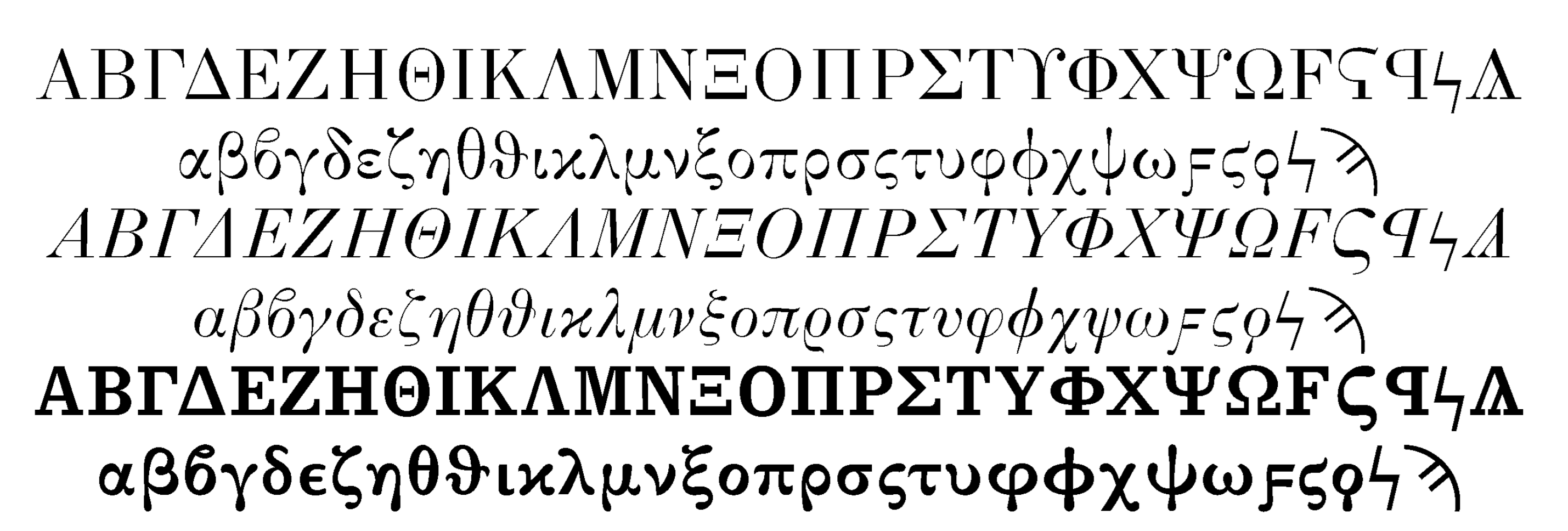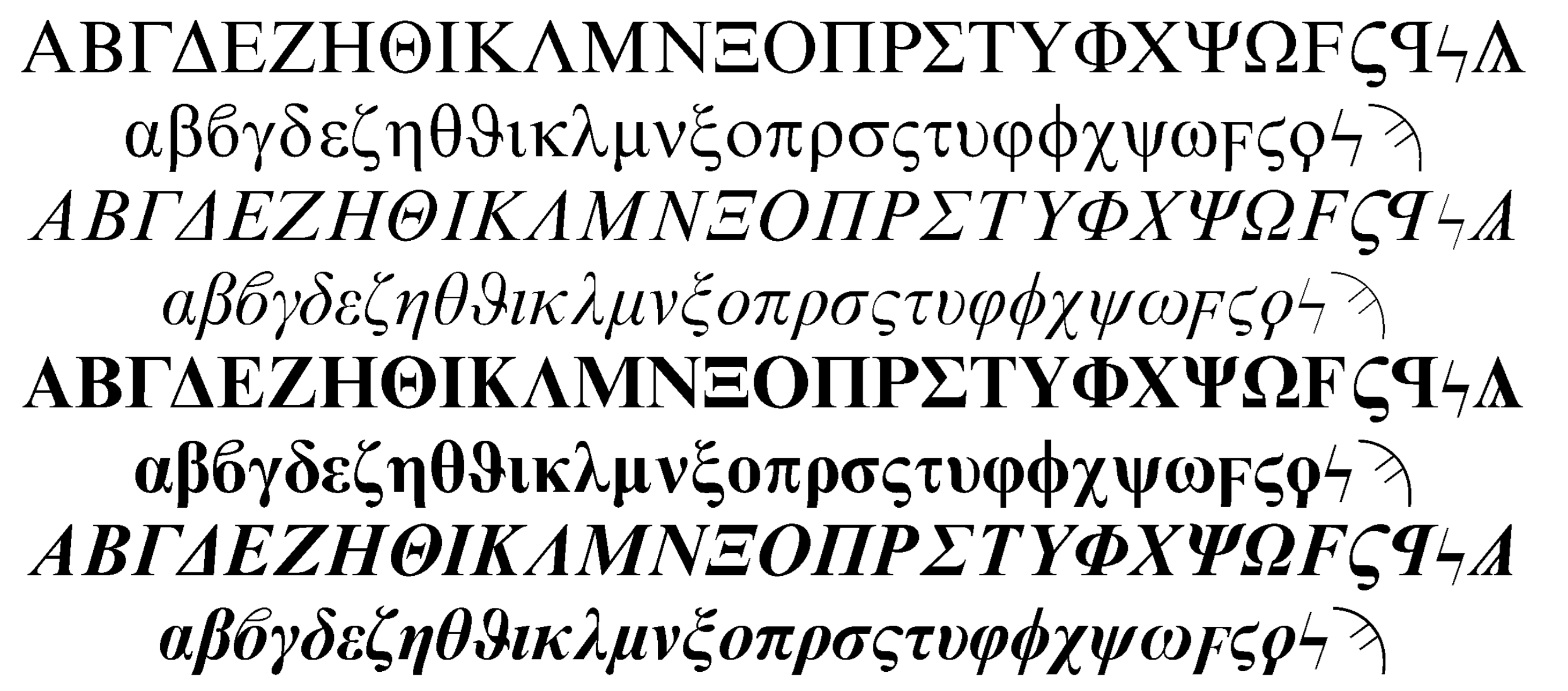|
Haralambous: Greek typeface classification

Yannis Haralambous, in From Unicode to Typography, a Case Study the Greek Script writes: Until the arrival of computer DTP, most printed books were typeset in one, or more, of the following typefaces: Apla (which Monotype calls Greek 90, 91, 92), Times, Porson, New Hellenic, Greek Sans 486. [These are all by Monotype.] When the phototypesetting machines were replaced by computers, the situation changed rapidly: the Times fonts were taken over by the computer, bad quality imitations of the original Monotype Greek 90 were used for the Apla style, new fonts were designed and used: Linotype released Greek Baskerville and New Century Schoolbook, Greek companies (like Magenta) have adapted many of the Latin typefaces to the Greek script. He classifies Greek text typefaces into five categories: - Apla (Didot). This has been the most common style of Greek typefaces. Its ancestors are 19th century Didot typefaces. Apla means plain, simple in Greek, and this is what this typeface has been: the most common typeface for ordinary text. Many companies have released versions in this style: Monotype Greek 90 (upright), Greek 91 (italic), Greek 92 (bold), Linotype Greek No. 2, Magenta Memories. Haralambous considers the Monotype ones to be, by far the best choice, in fact the most beautiful Greek types he has ever seen.
- The Times family (called Elsevier in Greece). This is a style used since 1878 as an alternative to Apla. Compared to the latter, it is more modern and pragmatical. This is why it often has been chosen for technical books, or books by authors who wanted to avoid a conservative image. Many companies have released Greek Times fonts, unfortunately not all of good quality, according to Haralambous. He opines that the best seems to be the original Monotype Greek Times, which has afterwards been cloned to produce the homonymous, lower quality, standard Microsoft Windows 95/NT font.
- Scholarly fonts:
- Porson: Haralambous: The Porson typeface is used in most Anglosaxon scholarly Greek editions, including the Oxford Classical Texts. This font has also been used in Greece, as a replacement for Greek 91, or as a companion font to New Hellenic. The German-Greek Langesheidt dictionary also uses Porson only for the Greek text. Only two Porson versions are known to the author: the one by Monotype (again, by far the best) and a recent one, by the Greek Font Society.
- Greek Sans 486, a bold font. It has been used for the entries of the Oxford Lexicon of Greek Personal Names. A font with strong resemblance to it is used by the Association Guillaume Budé, Le Cerf editions and the Bailly dictionary.
- New Hellenic, or Attika in Greek.
- Adaptations of Latin typefaces. Monotype did Gill Sans and Helvetica. Linotype adapted New Baskerville, New Caledonia, New Century Schoolbook, Op- tima, Souvenir, and others. The Greek company Magenta adapted a wide range of Latin typefaces, including Univers, Garamond and Bodoni. Microsoft sought the Hellenization of Palatino. The Greek Font Society (GFS) created many nice typefaces such as GFS Bodoni.
- Original creations of the last few years. Individual contributions include Takis Katsoulidis (who published aesthetic Greek typefaces such as Katsoulidis ans Apollonia).
|
EXTERNAL LINKS
Haralambous: Greek typeface classification
MyFonts search
Monotype search
Fontspring search
Google search
INTERNAL LINKS
Greek/Coptic ⦿
|















